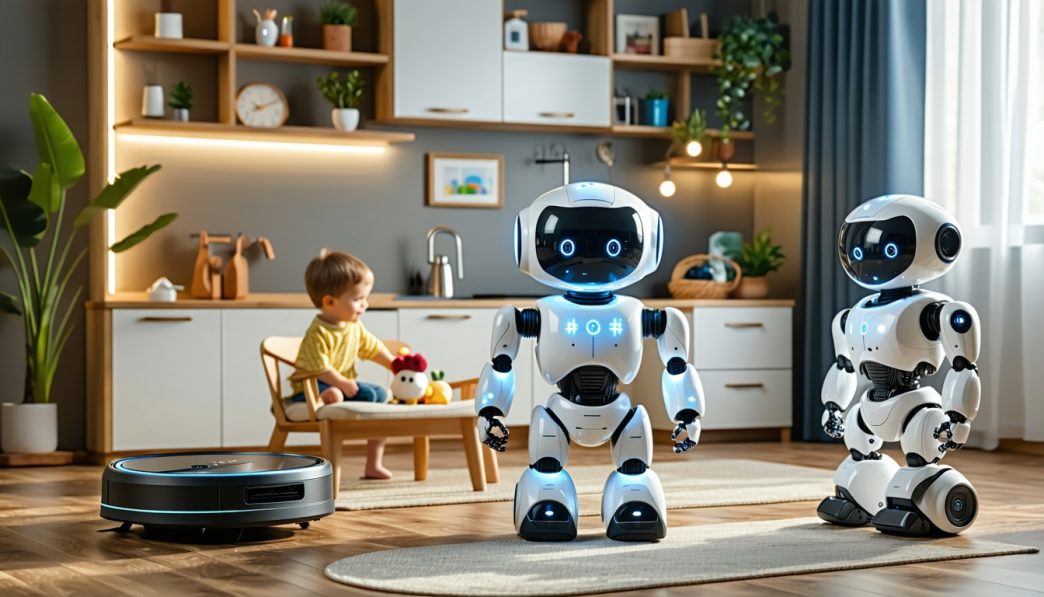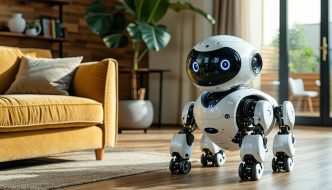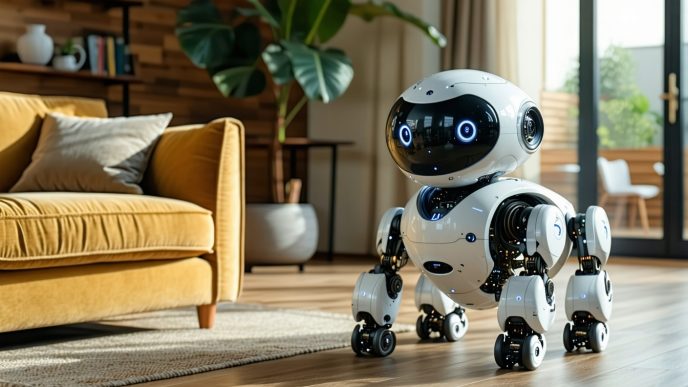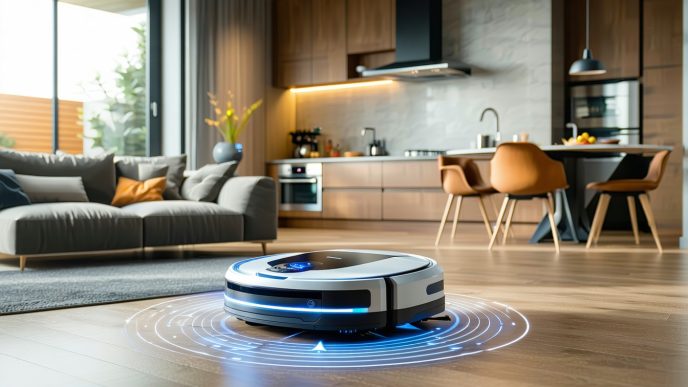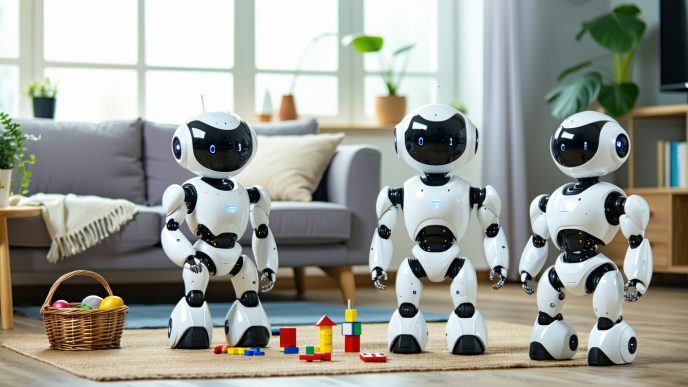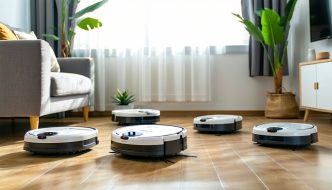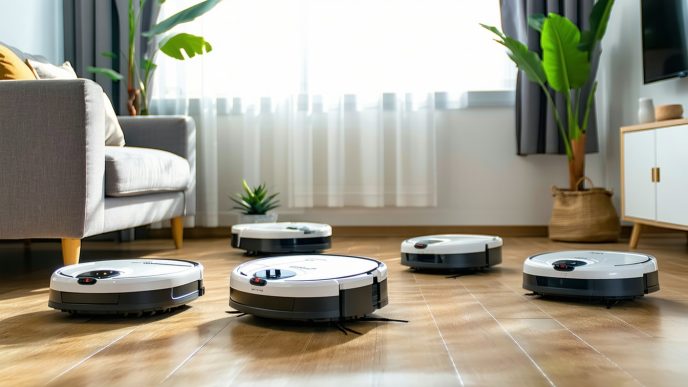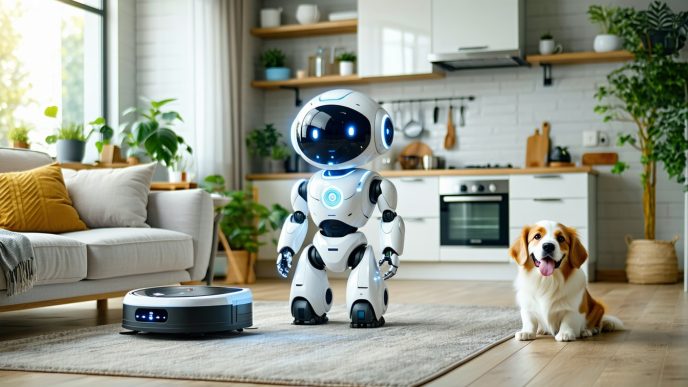Efficient Robot Usage in Small Living Spaces
Importance of Robotics in Compact Homes
Robots play a crucial role in enhancing the quality of life for residents in compact living spaces. They offer convenience and efficiency, helping individuals manage their time effectively in smaller environments where every square foot counts. The integration of robotic technology allows for streamlined tasks, making home maintenance and management easier than ever.
In small homes, where tasks may seem overwhelming due to limited space, robots can assist with cleaning, organization, and even companionship. Their ability to perform various functions makes them invaluable in urban settings. For a list of the most effective devices suitable for these environments, refer to our guide on the best robots for small homes.
Challenges of Using Robots in Small Living Spaces
While robots provide numerous advantages, they also present unique challenges in compact living areas. Space limitations can restrict their effective operation. For instance, some robots may require more room to navigate than is available in tight corners or crowded spaces.
Another significant concern is clutter. In smaller homes, various items may obstruct robotic movement, making efficient task completion difficult. Users must remain vigilant in keeping their areas organized to maximize robot performance. Factors like charging station placement and robot storage solutions also come into play when considering how to integrate robotics into everyday life.
The following table outlines common challenges encountered when using robots in small spaces:
| Challenge | Description |
|---|---|
| Space Limitations | Restricted room for movement and operation |
| Clutter | Obstructions that hinder robot efficiency |
| Charging Solutions | Limited spots for docking and recharging |
| Task Prioritization | Difficulty in determining which tasks to assign |
For those interested in minimizing these challenges, exploring options such as best robots with smart navigation for small spaces and best lightweight robots for easy transport can help enhance robot utility and effectiveness in compact environments.
Selecting the Right Robots
Choosing the appropriate robots for small living spaces can significantly enhance efficiency and convenience. Several factors must be taken into account to ensure compatibility with compact environments.
Factors to Consider for Small Homes
When selecting robots for compact homes, several key factors should be evaluated:
| Factor | Importance |
|---|---|
| Size and Weight | Smaller, lightweight robots are easier to store and maneuver in tight spaces. |
| Functionality | Multi-functional robots can perform various tasks, maximizing utility. |
| Smart Navigation | Robots with advanced navigation systems can move efficiently without bumping into obstacles. |
| Battery Life | Long-lasting batteries ensure that robots can complete their tasks without needing frequent recharging. |
| Storage Needs | Consideration for how and where the robots will be stored is crucial in small spaces. |
Considering these factors can lead to better decisions for maximizing the benefits of robotics in one’s living environment. For more insights, explore our article on tips for using robots in small homes.
Types of Robots Suitable for Compact Living
In small spaces, different types of robots can serve specific needs effectively. Below are some categories to consider:
| Robot Type | Description | Best Use Case |
|---|---|---|
| Cleaning Robots | Automated vacuum cleaners or mops that can navigate small rooms easily. | Ideal for maintaining cleanliness in tight quarters. Explore best small cleaning robots for options. |
| Home Assistant Robots | Robots that help with tasks like scheduling, reminders, and controlling smart devices. | Beneficial for managing daily life in an efficient manner. See our guide on best home assistant robots for small homes. |
| Compact Humanoid Robots | Robots designed for interaction, offering functionality and companionship. | Suitable for social and practical assistance. Check out the best compact humanoid robots. |
| Quadruped Robots | Small robotic pets or helpers that can navigate various terrains. | Great for companionship and light household tasks. Learn more about the best small quadruped robots. |
| Smart Navigation Robots | Robots equipped with sensors and algorithms for efficient path planning. | Perfect for maneuvering through complex environments. Read about the best robots with smart navigation for small spaces. |
| Lightweight Robots | Robots specifically designed to be easily transported across rooms. | Good for users needing mobility and flexibility in their robotic helpers. Discover the best lightweight robots for easy transport. |
| Multi-Room Capable Robots | Robots that can operate in multiple rooms, efficiently transitioning between spaces. | Useful for larger compact homes or apartments. Investigate our list of best robots with multi-room capabilities for small homes. |
Selecting the right type of robot can enhance the efficiency of daily tasks, making small living spaces more manageable.
Maximizing Robot Efficiency
Optimizing the use of robots in small living spaces can greatly enhance efficiency and make daily tasks easier. Understanding the right features and strategies is essential for making the most of robotic technology in compact environments.
Multi-Functional Robots
Multi-functional robots combine several tasks into one unit, making them ideal for small homes. By performing various functions, these robots save space and reduce the need for multiple devices.
For instance, a robot might vacuum, mop, and even provide home assistance all in one. This versatility is particularly valuable in tight spaces where storage of specialized devices can be challenging. Here’s a summary of common functions provided by multi-functional robots:
| Function | Description |
|---|---|
| Vacuuming | Cleans floors and carpets |
| Mopping | Provides wet cleaning for hard floors |
| Home Assistance | Can answer questions and control smart devices |
| Security Monitoring | Offers surveillance capability |
Choosing robots that serve multiple purposes can streamline household tasks, freeing up time and space for occupants.
Space-Saving Storage Solutions for Robots
Efficient storage is crucial in compact living spaces. Many robots come with clever storage options that minimize their footprint when not in use. Some effective ideas for managing space include:
- Wall-Mounted Charging Stations: These minimize floor space usage and keep robots charged and ready.
- Under-Furniture Storage: Robots designed to fit under sofas or beds can be easily stored out of sight.
- Collapsible Designs: Certain models can be folded or disassembled, allowing for easy storage in closets or shelves.
Selecting robots with built-in or complementary storage solutions can help maintain an organized home environment. For more ideas, see our article on the best robots for small homes.
Integration of Robots into Small Home Layouts
Integrating robots into existing home layouts involves ensuring they operate efficiently within defined spaces. Here are key considerations for successful integration:
- Smart Navigation: Robots equipped with advanced navigation systems can map out rooms and navigate obstacles effectively. This maximizes their cleaning efficiency in smaller areas. For options, refer to our piece on best robots with smart navigation for small spaces.
- Multi-Room Capabilities: Robots that can transition between different spaces without manual intervention offer convenience and thorough coverage. Explore our article on best robots with multi-room capabilities for small homes for insights.
- Task Scheduling: Scheduling tasks when space is less occupied, such as when residents are at work, maximizes efficiency and productivity.
Understanding these strategies will contribute significantly to maximizing robot effectiveness in compact living arrangements. Implementing these tips helps maintain a clean, efficient, and functional home environment.
Maintenance and Care Tips
To ensure the longevity and efficiency of robots in small homes, proper maintenance and care are essential. This section outlines key practices for maintaining cleaning and tidying robots, along with effective battery charging strategies tailored for compact living spaces.
Cleaning and Tidying Robot Maintenance
Regular cleaning and maintenance of robots are crucial to keep them functioning optimally in a compact living environment. Here’s a simple checklist for maintaining cleaning and tidying robots:
| Maintenance Task | Frequency | Notes |
|---|---|---|
| Empty dustbin | After each use | Prevents clogging and ensures peak performance. |
| Clean brushes and filters | Weekly | Removes hair and debris that can hinder operation. |
| Wipe down exterior | Weekly | Keeps the robot looking clean and prevents build-up of dust. |
| Check for software updates | Monthly | Ensures the robot runs on the latest firmware for optimal performance. |
These maintenance tasks are important in maximizing the efficiency of robots in small spaces. For more tips on selecting the best robots for small homes, visit our article on best robots for small homes.
Battery Charging Strategies for Compact Spaces
Efficient battery management is particularly important in compact environments where space is limited. Here are some effective strategies for battery charging that apartment dwellers and small home enthusiasts can consider:
-
Designated Charging Station: Allocate a small, consistent spot for the robot to dock and charge. This should be a flat area with easy access to power outlets.
-
Utilize a Smart Plug: For robots with scheduling capabilities, using a smart plug can allow users to control when the robot charges, helping to save energy and prolong battery life.
-
Battery Charge Monitoring: Some robots come with features that indicate battery status. Regularly check these notifications to ensure the robot is charged and ready for use.
-
Maximize Charging Space: Consider using vertical storage solutions to keep charging stations organized and clear of clutter in tighter areas.
| Strategy | Description |
|---|---|
| Designated Charging Station | Keeps the charging area tidy and efficient. |
| Smart Plug Utilization | Provides control over charging times. |
| Battery Charge Monitoring | Ensures the robot is always ready for operation. |
| Maximizing Charging Space | Organizes the charging area to save space. |
Following these maintenance and charging strategies will enhance the functionality of robots in small homes. By implementing these practices, users can ensure their robots remain efficient and effective tools in managing their compact living environments. For information on different types of robots, check our article on best compact humanoid robots and best small cleaning robots.
Organizing Robot Tasks
Efficiently managing the tasks of robots in small living spaces is crucial for maximizing their effectiveness. Proper organization can lead to streamlined operations and less clutter.
Creating a Robot Schedule
Establishing a clear schedule can enhance the productivity of robots while ensuring that their tasks do not interfere with daily activities. For instance, a cleaning robot may be programmed to operate during off-peak hours, such as when residents are at work or during the night.
To set up a practical schedule, consider the following factors:
| Factor | Explanation |
|---|---|
| Time Availability | Identify hours when the robot can operate without interruption. |
| Task Duration | Estimate how long each task will take to effectively plan the schedule. |
| Frequency | Determine how often to perform specific tasks, such as daily cleaning or weekly maintenance. |
Integrating a calendar app with reminders may help in keeping track of the robot’s schedule. For additional guidance on organizing tasks, refer to our article on tips for using robots in small homes.
Prioritizing Robot Functions Based on Space Constraints
In compact living environments, prioritizing robot functions is essential. Residents should identify which tasks are most critical and allocate resources accordingly. For example, a small cleaning robot might be primarily tasked with vacuuming due to limited floor space, while a home assistant robot can handle scheduling and reminders.
| Task | Priority Level | Description |
|---|---|---|
| Vacuuming | High | Regular vacuuming maintains cleanliness without requiring human effort. |
| Dusting | Medium | Occasional dusting can keep surfaces tidy, but may not need daily attention. |
| Scheduling | Medium | Organizing tasks using a home assistant robot maximizes overall efficiency. |
| Lawn Care | Low | If applicable, lawn care tasks can be scheduled less frequently in compact spaces. |
By prioritizing tasks and focusing on efficient operations, residents can ensure that their robotic assistants efficiently meet their needs. For further information on various types of robots, see our articles on best small cleaning robots and best home assistant robots for small homes.


